Introduction to Oud (Agarwood)
In the vast realm of fragrances, few can claim the mystique and reverence that oud (agarwood) carries, especially within the tapestry of Middle Eastern culture. Often referred to as “liquid gold,” this rich, resinous wood, hailing from the heart of certain Southeast Asian trees, has painted aromatic strokes across history, captivating souls and weaving tales of luxury, tradition, and spirituality. Its essence is more than just a scent; it’s a legacy, a testament to the millennia-old bond between the Middle Eastern world and this unique aromatic treasure.
Traveling through time, from the ancient caravans trading spices and resins to the modern perfumeries of Dubai and Riyadh, the allure of oud has remained unparalleled. But what is it about oud that enchants and ensnares the senses, making it an irreplaceable part of Middle Eastern heritage? Join us on this fragrant journey as we unravel the secrets of oud, its origins, significance, and the indelible mark it leaves on those who encounter it.
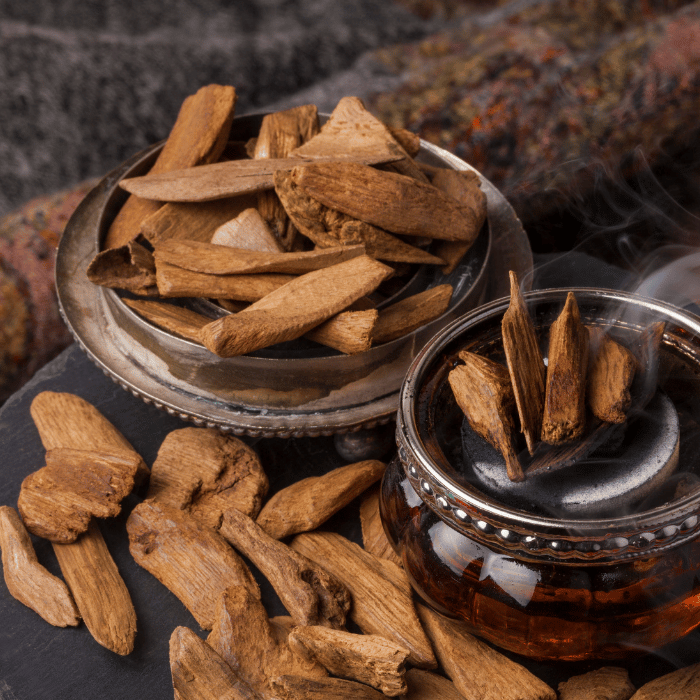
The Origins and Production of Oud
The Agar Tree: The Source of Oud
Venture into Southeast Asia’s dense tropical forests and you might find an ordinary-looking tree: the Aquilaria. Inside its heartwood, the mystical oud originates. This tree undergoes an almost alchemical transformation from timber to treasured resin. When a specific mold infects the tree, it produces a fragrant, dark resinous heartwood known as agarwood or oud.
Oud’s creation showcases nature’s poetic irony. Born from decay, its value is unparalleled. Only a fraction of these trees produce the resin, making it rare and elevating its status. Trees of different ages, locations, and species yield variants that are more fragrant and luxurious. This adds complexity to its already intricate scent profile.
The Harvesting Process
Like fine wine, the extraction and harvesting of oud require time, patience, and expertise. Local artisans, guardians of age-old traditions, begin by identifying potential agarwood-producing trees. Once a suitable tree is identified, they employ meticulous techniques to extract the oud without causing harm to the environment or the tree itself.
The emphasis on sustainability is paramount. Given the high demand and the painstaking process of oud production, the threat of overharvesting looms large. Conscious efforts are now being made to ensure that the harvesting is sustainable, allowing future generations to experience the magic of oud.
Oud in Middle Eastern Rituals and Traditions
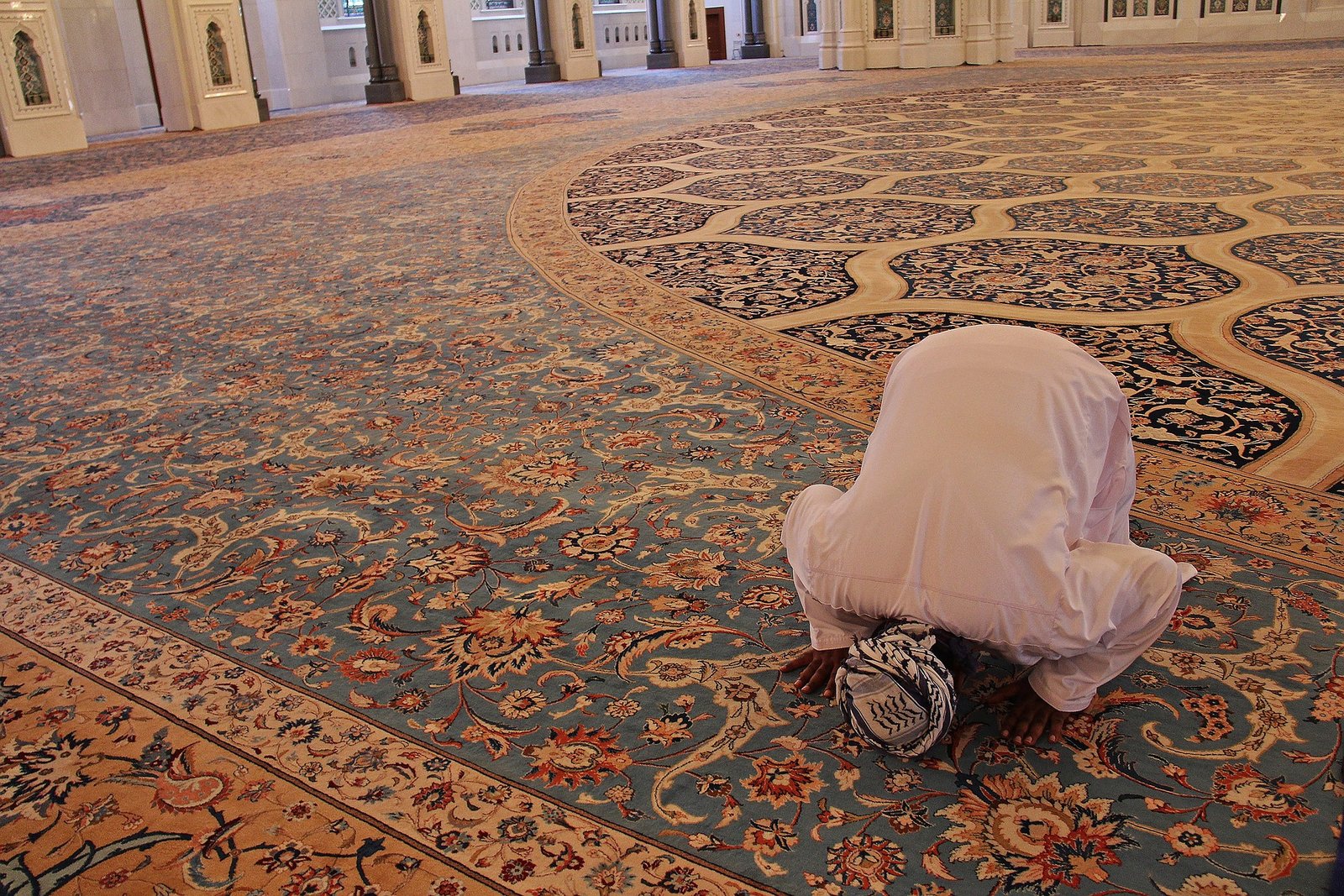
Oud in Religious Ceremonies
In the heart of Middle Eastern religious rituals, the spiritual essence of oud is deeply embedded. During special prayers, mosques fill with its resinous warmth, fostering a tranquil, introspective atmosphere. Prophet Muhammad is believed to have extolled the virtues of oud, recommending it for both spiritual and therapeutic uses. The enchanting aroma not only cleanses the environment but also elevates the spirit, serving as a perfect companion for moments of prayer and meditation.
Social Gatherings and Celebrations
Beyond the confines of religious observance, the allure of oud permeates social and cultural celebrations. It’s a frequent guest at weddings, where its deep aroma signifies blessings, prosperity, and the intertwining of two souls. The bride and groom are often adorned with oud-based perfumes, weaving an aromatic tale of love and promise.
Feasts and gatherings, too, are incomplete without the ceremonial burning of oud chips. As the smoke rises, it carries with it stories, laughter, and memories, binding everyone in a fragrant embrace. The tradition of gifting oud-based products, be it in the form of pure resin, oil, or perfumes, is a testament to its value in social exchanges, symbolizing respect, love, and kinship.
Oud in Everyday Life
For many in the Middle East, a day without oud is unimaginable. It’s more than just a fragrance; it’s an integral part of daily life, a personal signature. Men and women alike adorn themselves with oud perfumes, each variant telling a unique story, each drop echoing personal tales of love, loss, joy, and dreams.
Moreover, homes are often scented with oud, inviting guests into a haven of warmth and hospitality. This daily ritual of using oud goes beyond mere habit; it’s a reflection of identity, legacy, and a deep-seated cultural reverence.
The Fragrance: The Heart and Soul of Oud

The Multifaceted Scent Profile of Oud
A scent as timeless as oud is naturally layered with depth and complexity. With its rich base, oud oscillates between woody, resinous, smoky, and at times, sweet undertones. The olfactory journey begins with an intense burst that can be both sharp and comforting, leading the senses through a labyrinth of earthy, musky nuances. Depending on the region of its origin and the grade of the wood, the fragrance may even carry hints of spices, leather, or dried fruits.
The beauty of oud lies in its unpredictable and individual nature; no two ouds are exactly alike. This uniqueness is what makes it such a cherished component in the world of perfumery, allowing creators a vast canvas of notes to play with.
Oud in Modern Perfumery
The allure of oud transcends borders, and today, it’s not just the Middle East but the entire world that’s under its aromatic spell. Prestigious perfume houses in Paris, Milan, and New York have embraced oud, often marrying its deep, resinous notes with floral, citrus, or even aquatic undertones, creating fragrances that are both contemporary and nostalgic.
Such global collaborations signify more than just market trends; they’re a celebration of shared human experiences, of stories told through scents, and of traditions meeting innovation.
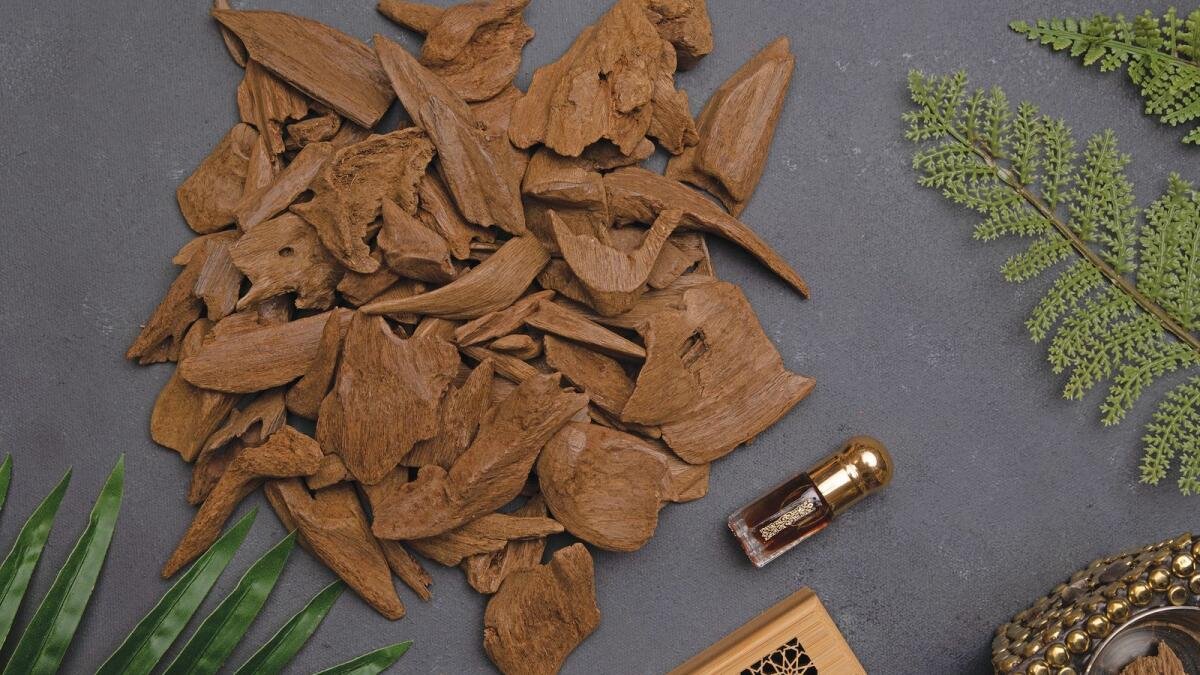
Beyond the Scent: Oud’s Medicinal and Therapeutic Uses
Historically, the allure of oud extended beyond its enchanting aroma. Ancient manuscripts and traditional medicinal texts often extolled the numerous health benefits of agarwood, positioning it as a panacea for a myriad of ailments.
Historical Accounts of Oud’s Benefits
The therapeutic uses of oud date back centuries. In traditional Middle Eastern, South Asian, and East Asian medicine, oud was considered a precious remedy. It was believed to bring balance to the body’s energies, relieve digestive issues, and even serve as a potent aphrodisiac. Its anti-inflammatory properties were employed to soothe various skin conditions, while its calming scent was used to alleviate anxiety and spiritual malaise.
Modern Studies on Oud’s Therapeutic Properties
Fast forward to today, and scientific research is catching up with what tradition has long known. Studies1 are increasingly focusing on the potential benefits of oud oil, from its anti-inflammatory and antioxidant properties to its potential role in neuroprotective and anti-cancer therapies.
The calming effects of oud have also found their way into modern aromatherapy. Its deep, warm scent is believed to ground emotions, reduce stress, and promote mental clarity. For many, the simple act of burning oud chips or applying oud-infused oil can be a therapeutic ritual, a moment of pause and reflection in the hustle and bustle of modern life.
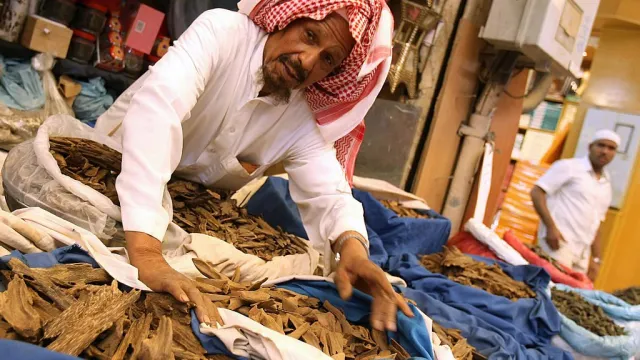
The Global Oud Market: Luxury, Authenticity, and Sustainability
In recent years, the global market for oud has expanded exponentially, reflecting its growing appeal beyond the borders of the Middle East. This surge in demand, while celebrating the widespread allure of oud, also underscores several critical challenges.
Oud as a Symbol of Luxury
In the corridors of high-end perfumeries and luxury boutiques, oud has established itself as a mark of opulence. Its scarcity, combined with the intricate extraction process, has catapulted its value, making it one of the most sought-after ingredients in luxury fragrances. Top-tier brands, ever eager to capture its essence, often market oud-infused products with a premium price tag, further entrenching its status as the “liquid gold” of perfumery.
The Quest for Authenticity
However, with great demand comes the inevitable rise of counterfeits. The market today is rife with synthetic ouds and adulterated oils, making it challenging for consumers to discern genuine products from imitations. Authentic oud has a depth and richness that’s nearly impossible to replicate fully. But to the untrained nose, distinguishing the nuances can be challenging. Thus, it becomes crucial for consumers to source their oud from reputable dealers and to be educated about its characteristics.
Sustainability Concerns
Another pressing issue facing the oud industry is sustainability. The rampant demand has led to overharvesting, threatening the very existence of Aquilaria trees and the ecosystems they thrive in. Recognizing the urgency, several initiatives are underway to promote sustainable harvesting and even cultivate agarwood trees, ensuring that this precious resource isn’t lost to future generations.
Conservationists, local communities, and ethical businesses are collaborating to strike a balance between meeting global demand and preserving the rich heritage of oud. Their efforts underscore a broader message: luxury and sustainability need not be at odds; they can coexist harmoniously.
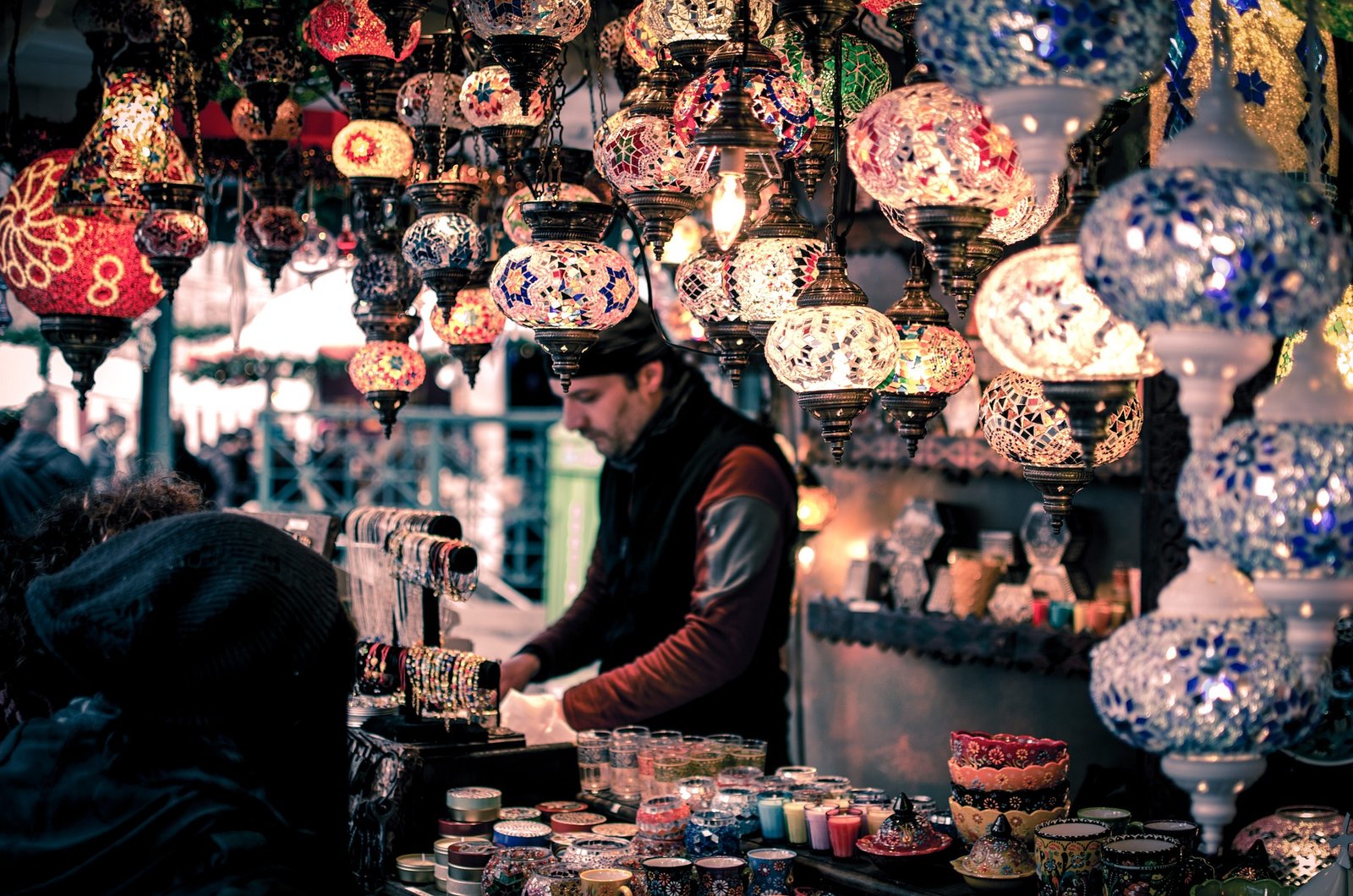
The Future of Oud: Innovations, Evolving Traditions, and Cultural Exchange
The ever-growing fascination with oud has paved the way for its evolution and innovation in various spheres, from perfumery to cultural exchanges. As the world becomes more interconnected, the future of oud promises to be a dynamic blend of preservation, innovation, and global appreciation.
Innovations in Oud Extraction and Usage
Technological advancements have ushered in new methods for extracting and refining oud, ensuring higher yields and purity. Bio-engineering and synthetic biology are also being explored to create sustainable and scalable sources of oud, without relying heavily on wild Aquilaria trees. These innovations might hold the key to meeting the global demand without compromising the unique essence of authentic oud.
Evolving Traditions: A Global Oud Renaissance
While the Middle East remains the heartland of oud appreciation, the resin is experiencing a renaissance globally. From Tokyo to Toronto, oud-themed events, workshops, and festivals are emerging, celebrating its rich history while introducing it to new audiences. These events are not just about the scent but encompass the entire cultural and historical tapestry surrounding oud.
In the world of music, for instance, the traditional Oud instrument (a lute-like stringed instrument) is experiencing a resurgence, with artists blending its melodies with contemporary genres, further amplifying the cultural exchange.
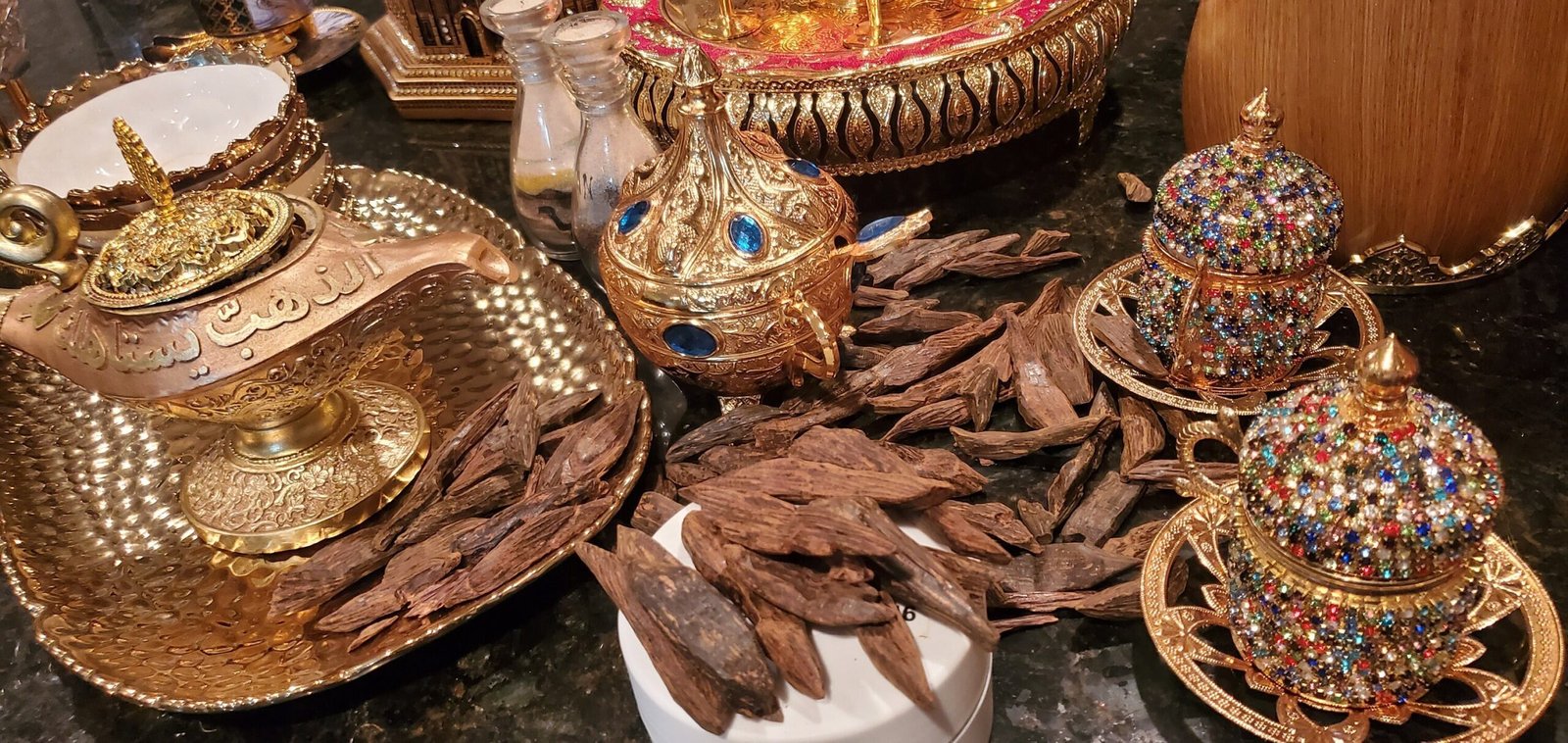
Cultural Exchanges and Collaborations
The allure of oud serves as a bridge, fostering collaborations between perfumers, artists, and craftsmen from diverse backgrounds. Western perfumers are increasingly journeying to the Middle East, immersing themselves in the traditions of oud, and co-creating fragrances with local experts. Similarly, Middle Eastern artisans are collaborating with global brands, infusing products with the unique charm of oud while imbibing international trends.
Such collaborations are a testament to the universality of human experiences. They remind us that while cultures may be diverse, there exist threads, like the allure of oud, that bind us in shared admiration and wonder.
Conclusion: The Timeless Allure of Oud
From the ancient corridors of Arabian palaces to the sleek shelves of modern-day perfumeries, oud’s allure has remained undiminished. Its mystique is not just about a unique aroma, but it also embodies stories, traditions, and emotions spanning generations.
Beyond its tangible scent lies the intangible – memories of family gatherings, royal ceremonies, and personal milestones, all marked by the resonant depth of oud. Its ability to evoke such profound emotions and recollections stands testament to its enduring charm. While the world has embraced oud, its heart remains firmly rooted in the Middle East. It’s not just a fragrance, but a legacy, a reflection of the region’s history, values, and aesthetics. As with all things precious, there’s a responsibility to protect and respect the tradition of oud. From sustainable harvesting to ensuring the authenticity of oud products, preserving its legacy is a collective responsibility.
Further Reading
Agarwood Incense: The Luxurious Scent Worth Its Weight in Gold





